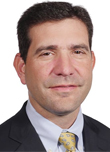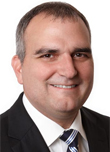5 Agile Commercial Strategies Medical Device Organizations Should Adopt Immediately
By Craig Ackerman and Doug Beveridge, Alexander Group

The ideal job description for a medical device field sales rep 20 years ago might have included, along with significant product and clinical knowledge, an effectiveness at nurturing relationships, ability to read non-verbal communication, unquenchable confidence and resilience, and ability to convey enthusiasm and passion.
When the pandemic hit, sales reps were no longer granted access to hospitals, physicians’ office waiting rooms, and/or operating rooms. Rather, representatives found themselves in an unfamiliar world of online seminars, training, and conferences, with video calls, texts, and emails replacing the more familiar face-to-face visits with customers and prospects.
As such, success today demands even more from the modern-day medical device sales rep. She or he will likely be more:
- Analytics-driven,
- Comfortable using text, social media, and video, and
- Able to keep a remote audience just as engaged and attentive with the same charisma, energy, and outcomes.
While face-to-face access is once again possible, and access continues to improve, it has not, and will not, return to 100% of pre-pandemic levels. The new norm will require operating in more of a hybrid environment. Representatives will retain face-to-face access with medical providers, but much of the access will need to be scheduled or in response to a specific acute provider need. No longer will a quick check-in or “wandering the halls” suffice. The new reality will afford opportunities for leading medical device organizations to improve both the efficiency and effectiveness of interactions with their existing customers – potentially improving the overall provider experience. However, access restrictions will make acquiring new customers, or the successful introduction of new products, more of a challenge.
These realities underscore the need for medical device organizations to evolve their commercial strategies to be more flexible, resilient, and nimble. Hierarchical decision-making and slow time-to-market strategies should be replaced by operational agility as well as a “test-and-learn” culture that demands cross-collaboration and values data-driven solutions.
The ideal agile commercial model includes five strategies, all of which require organization-wide commitment to be successful.
1. Identify, Enable, And Reward Talent.
Medical device companies should rethink how they attract, develop, retain, and deploy talent to efficiently drive results. Ensure front-line resources, and their managers, are adequately enabled to succeed in the new hybrid reality. Clearly identify the skills, capabilities, and activities expected for each distinct role and ensure the tools and reward systems support these objectives. Companies may need to reconfigure sales territories and targets to reflect the new mix of in-person to virtual. The introduction of new roles focused on demand generation or post-sale success may make sense for modern medical device organizations. Regardless of the role, attracting the best talent might also mean adjusting base salaries and/or increasing the total levels of compensation. Take the time to clearly define each role, the competencies required, their interactions within the selling and service cycle, and the associated enablement programs needed to support their success. Change need not occur all at once. Do not be afraid to test, learn, and scale new roles or programs.
2. Invest In Virtual Engagement Technologies.
Hospitals are widely using telehealth tools to facilitate physician-patient interaction, while hospital purchasing organizations and integrated delivery networks are using digital meeting and interaction platforms. The long lockout necessitated the investment in, and accelerated the adoption of, digital and technology tools. Medical device companies should develop digital videos, self-serve resources, informational downloads, and other tools to inform customers, especially while in-person visits are still limited. Successfully accomplishing this could mean the need for a long-term commitment to a well-defined digital strategy, as well as the creation of new content and capabilities. With the increase in digital interactions, medical device companies would benefit by investing in a “customer success motion,” often seen within the tech industry. While customer success can take different forms, it typically describes a proactive form of engagement targeted at existing customers. Success functions may monitor product utilization trends within similar customer groups, suggest training or content to improve customer satisfaction and utilization, or simply act as another contact point into accounts to head off any issues or dissatisfaction. While not prevalent today, this proactive, integrated approach to driving customer retention and expansion could prove a differentiator.
3. Know Your Buyer Preferences.
Buyer experiences and expectations have changed. Medical device organizations should update (and maintain) buyer personas to reflect their product knowledge, changing pain points, communication preferences, and buying patterns, as well as changing demographic characteristics. Doing so requires capturing regular feedback in the form of customer research. Further classify the various buyer populations by quantifying the total addressable market and prioritizing places where your organization has the highest likelihood of success. Activate the insights gathered by using codified “plays” to properly engage and persuade customers.
4. Focus On Key Accounts.
For medical device companies, key accounts typically include large physician practices, group purchasing organizations, and integrated healthcare networks. These types of organizations are complex, with multiple influencers, locations, and many vendor relationships. Success requires a holistic approach that considers all aspects of the relationship (i.e., portfolio vs. product, business impact vs. product sales). Properly identifying, engaging, and maintaining mutually beneficial relationships with these accounts takes discipline, investment, proper talent, and active executive sponsorship.
5. Recalibrate Regularly.
Commercial leaders should shorten planning cycles and continuously learn from data analytics so they can ensure products and services they offer are truly meeting customers’ needs. Teams should work closely together to identify where the gaps are in their current service or product offerings and deliver new solutions that drive value for customers all along the buyer journey. In a time of industry disruption, more regular commercial model “check-ups” can keep you in step with your customers and their needs.
Both patient and provider preferences have been forever altered due to the events of the past 18 months. Innovations and investments in areas such as telehealth and virtual support of healthcare providers make sense, improve overall healthcare delivery, and are here to stay. While in-person interactions will surely continue to increase as the pandemic subsides, medical device organizations should recognize and respond accordingly to the changes apparent within the healthcare delivery system. Those firms that build flexibility into their commercial models, become smarter about using analytics and understanding customer preferences, and invest in their key account relationships will be ideally poised to succeed.
About The Authors:
 Craig Ackerman is a principal in the Alexander Group’s Atlanta office and the leader of the firm’s medical device practice. Areas of focus in his consulting work include market segmentation, customer coverage models, sales process effectiveness, sales job design, quota setting, and incentive compensation design. Craig works with sales organizations to develop actionable go-to-market strategies across many industries, including medical devices, biotechnology, financial services, and high technology. Craig has extensive expertise in business process improvement, operational support systems, and customer acquisition strategies. Craig has a B.S. from Florida International University and an M.B.A. from the Goizueta School of Business at Emory University.
Craig Ackerman is a principal in the Alexander Group’s Atlanta office and the leader of the firm’s medical device practice. Areas of focus in his consulting work include market segmentation, customer coverage models, sales process effectiveness, sales job design, quota setting, and incentive compensation design. Craig works with sales organizations to develop actionable go-to-market strategies across many industries, including medical devices, biotechnology, financial services, and high technology. Craig has extensive expertise in business process improvement, operational support systems, and customer acquisition strategies. Craig has a B.S. from Florida International University and an M.B.A. from the Goizueta School of Business at Emory University.
 Doug Beveridge is a principal in the Atlanta office of the Alexander Group and is leader of the firm’s global healthcare practice. He brings a wide range of experience exclusively focused on helping companies accelerate profitable revenue growth. Doug leads business consulting services for mid-market, Fortune 500 companies and private equity (PE) firms and their portfolio companies. His clients serve the healthcare industry, including biotech, pharmaceutical, and medical device manufacturers; software and service providers; and insurance companies. Doug also brings significant cross-industry experience and leads organizational mergers and integrations, global go-to-customer transformations, and comprehensive change adoption programs.
Doug Beveridge is a principal in the Atlanta office of the Alexander Group and is leader of the firm’s global healthcare practice. He brings a wide range of experience exclusively focused on helping companies accelerate profitable revenue growth. Doug leads business consulting services for mid-market, Fortune 500 companies and private equity (PE) firms and their portfolio companies. His clients serve the healthcare industry, including biotech, pharmaceutical, and medical device manufacturers; software and service providers; and insurance companies. Doug also brings significant cross-industry experience and leads organizational mergers and integrations, global go-to-customer transformations, and comprehensive change adoption programs.
